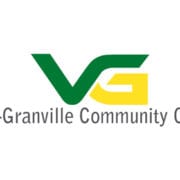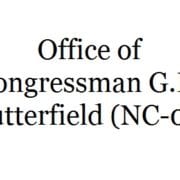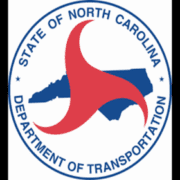VGCC surpasses $6 million in grant funding with new initiative
/by WIZS StaffVance-Granville Community College’s Grants Office has now surpassed $6 million in funding to support students, the VGCC Board of Trustees was informed on Monday night, Jan. 23, at its regular bimonthly meeting on Main Campus.
In its brief four-year history, the Grants Office has secured 37 grants totaling $6,053,883, according to Dr. Ken Lewis, Vance-Granville’s vice president of institutional research and technology.
Among the largest grants, $1,757,299 from the U.S. Department of Labor’s Trade Adjustment Assistance Community College and Career Training (TAACCCT) Grant Program is the single largest competitive grant award received in the history of the college. TAACCCT supports the development of innovative training programs for advanced manufacturing careers. The college started its Mechatronics program and expanded its Welding program through the grant.
The Advanced Manufacturing Skills Training Alliance (AMSTA) with the four public school systems in the college’s coverage area was created with a $1.2 million grant from the North Carolina Education and Workforce Innovation Fund. In addition, $460,000 has been awarded to the Training Alliance by the Golden LEAF Foundation, along with grants of $245,923 and $237,757 from the Duke Energy Foundation to purchase state-of-the-art equipment.
And, most recently, VGCC was awarded nearly $1 million from the U.S. Department of Labor to launch the North Carolina TechHire Program to train students in information technology and advanced manufacturing programs.
In addition to the TechHire grant, Dr. Lewis said the most recent awards include:
- A pair of Male Mentoring Success Initiative grants over two years, totaling $34,000, to help students stay in school and on track to graduate or transfer to a four-year university;
- A Wake Electric grant of $3,000 to fund classroom technology;
- An NC Works Career Coach grant of $17,000 in partnership with the Granville and Warren County school systems to promote college attendance and Career & College Promise (CCP) classes in the high schools;
- A Perkins grant, $181,000, supporting the college’s Business and Applied Technologies and Health Sciences curriculum programs;
- A Library Services and Technology Act planning grant of $23,000 for space utilization upgrades;
- A Cannon Foundation grant of $150,000 to complete renovation of Main Campus Building 10;
- A National Summer Transportation Institute grant from the Federal Highway Administration, $37,000, allowing high school students in Warren County to learn more about career opportunities in transportation-related industries; and
- A Taste of Industry grant of $10,000 from the North Carolina Community College System to support AMSTA in conjunction with Granville County Schools.
The grants update was included in the report of the Curriculum Committee, chaired by Barbara Cates Harris. In the committee’s reports, Dr. Angela Ballentine, the college’s vice president of academic affairs, also updated the board on the annual Continuing Education and Basic Skills visitation report.
Building Improvements
The board approved recommendations of the Building Committee, chaired by Trustee Donald Seifert, ranking in priority order the firms to design and oversee exterior masonry repairs and restoration as well as HVAC replacements and fire alarm system installations. Both Main Campus projects will be funded by the Connect NC bonds approved by state voters in March 2016.
At an estimated cost of $1 million, the college plans to restore, structurally repair and waterproof building masonry roof lines, walls and building bridges that have deteriorated over time because of the penetration of water/moisture into and through the building structures. REI Engineers of Raleigh was chosen as the highest ranked firm for the masonry project.
The primary focus of the HVAC/fire alarm project, estimated to cost $4.1 million, is to replace existing deteriorated heating, ventilation and air conditioning (HVAC) systems with new systems that provide greater stability, control and energy efficiency, and to replace existing fire alarm systems with new addressable systems that meet state code compliance. Engineered Designs, Inc., of Cary was selected as the highest ranked firm for the project.
VGCC is receiving $7.6 million from the $2 billion Connect NC Public Improvement Bond package. Funds may be used for the repair and renovation of facilities to meet the educational needs of students and/or the construction of new facilities to expand programs and services.
Other Action
In other action:
- The board approved Mid-Year Amendments to the 2016-2017 Budget. The adjustments were necessary to account for $1,664,312 in carryover funds from the previous year and grant funding.
- Trustee Sara Wester, chair of the Personnel Committee, reported on new employees and resignations.
- Trustee Opie Frazier, chair of the Investment Committee, reported a gain on the college’s investments now being managed by First Citizens Wealth Management.
- Dr. Stelfanie Williams, VGCC’s president, updated the trustees on activities since the board last met in November. She also announced the dates of upcoming events: a Valentine’s Day Luncheon sponsored by the college’s Culinary Arts program, Feb. 16; a North Carolina Association of Community College Trustees Law and Legislative Seminar in Raleigh, March 29-31; the fifth annual Dinner Theater, April 27-28, in the Civic Center on Main Campus; the annual VGCC Endowment Fund Golf Tournament, May 2, at the Henderson Country Club; and Commencement, May 12, at the gazebo on Main Campus.
The next meeting of the Board of Trustees is set for Monday, March 20, on the Main Campus.
— END —
Butterfield, Thompson Reintroduce Access to Inpatient Rehabilitation Therapy Act
/by WIZS StaffWASHINGTON, D.C. – On Tuesday, U.S. Representatives G. K. Butterfield (D-NC) and Glenn ‘GT’ Thompson (R-PA) reintroduced legislation that would direct the Centers for Medicare and Medicaid Services (CMS) to cover physician-prescribed recreational therapy services.
H.R. 626, the Access to Inpatient Rehabilitation Therapy Act of 2017, would amend the Social Security Act to include recreational therapy among the therapy methods that can be considered part of an intensive rehabilitation therapy program in an inpatient rehabilitation hospital or unit.
This legislation would provide flexibility to CMS’ definition of “intensity of therapy” requirement. Essentially, the requirement helps CMS determine which beneficiaries are appropriate for treatment in an inpatient rehabilitation hospital or unit. Until 2010, physicians could prescribe, and CMS would cover, recreational therapy for patients who have brain injuries, those who have sustained strokes and amputations, individuals living with neurological disorders and a range of other conditions.
“When overcoming an injury or disability it is important to be able to access appropriate rehabilitation services,” Butterfield said. “I am proud to join Representative Thompson in supporting this bipartisan legislation to expand the rehabilitation services seniors on Medicare are eligible for. This important legislation will benefit North Carolinians and people across the country who suffer from health challenges like brain injuries, spinal cord injuries, amputations, or cardiovascular complications.”
“A patient’s health plan should be left to their physician and health professionals to determine what is medically necessary,” Thompson said. “Before coming to Congress, I worked as a certified therapeutic recreation specialist. There is no greater joy than to see your patient make progress after a debilitating event such as a stroke, spinal cord, or brain injury. I am pleased to reintroduce this common sense, bipartisan bill with Representative Butterfield, to ensure Medicare empowers physicians to prescribe the best care possible.”
“Inpatient hospital rehabilitation is so effective because of the intensive and diverse therapy programs offered in this setting. Passage of this important Medicare bill will ensure that patients are prescribed the right mix of therapies, including recreational therapy, that meet their individual needs,” said Dawn De Vries, the Past-President (2016-2017) of the American Therapeutic Recreation Association (ATRA). “This is a very patient-centric Medicare bill.”
“We applaud Congressmen Thompson and Butterfield for reintroducing this important legislation to reinstate the discretion of physicians practicing in rehabilitation hospitals to choose the mix of therapies that are clinically appropriate for Medicare patients,” said Dr. Steve R. Geiringer, President of the American Academy of Physical Medicine and Rehabilitation (AAPM&R). “This bill will free the hands of doctors to treat patients with injuries and disabilities according to their individual rehabilitation therapy needs, rather than following unnecessarily restrictive regulations. We urge Congress to pass this bipartisan bill at its earliest opportunity.”
THE ‘THREE HOUR RULE’
CMS has interpreted the intensity of therapy requirement through the metric it calls the “three hour rule.” This rule requires the patient to be able to participate in three hours of rehabilitation therapy per day, five days per week, or 15 hours of rehabilitation therapy over a one-week period.
Prior to 2010, CMS regulations explicitly stated that physical therapy, occupational therapy, speech therapy, and/or orthotics and prosthetics were counted toward the “three hour rule” on an as-needed basis. In addition, CMS regulations stated that other therapeutic modalities that were determined by the physician and the rehabilitation team to be needed by the patient on a priority basis would satisfy the rule.
But on January 1, 2010, Medicare revised its “three hour rule” to include only the following therapies: physical, occupational, and speech therapy as well as orthotics and prosthetics. It removed the discretion of the physician and the rehabilitation team to count other therapeutic services needed by the patient toward satisfaction of the “three hour rule.” As a result, recreational therapy services are often not available to patients who require medically necessary recreational therapy as part of their plan of care.
H.R. 626 would restore all physician-prescribed therapies as part of a patient’s coverage.
SUPPORT FOR H.R. 626
National organizations that support this bill include:
American Academy of Physical Medicine and Rehabilitation
American Medical Rehabilitation Providers Association
American Academy of Orthotists and Prosthetists
American Therapeutic Recreation Association
Association of Rehabilitation Nurses
Brain Injury Association of America
CARF, International (Commission on Accreditation of Rehabilitation Facilities)
Christopher & Dana Reeve Foundation
Council on Brain Injury
United Spinal Association
Bill would direct Medicare to once again cover recreational therapy for patients
###
NCSWIA awards Oxford $10 Million in Water and Sewer Infrastructure Funds
/by WIZS StaffFor Immediate Release
In February of 2016 City Engineer Amy Ratliff recommended that the City apply for NC Connect, North Carolina State funds. Faced with aging water and sewer infrastructure that in places dates back to 1907, the Commissioners approved the recommendation and ordered a plan to proceed.
In September of 2016, The Board of Commissioners approved a water and sewer rate increase to meet minimum rates required by the State of North Carolina to apply for the water and sewer grants and loans to allow Oxford to be in a better position to maintain both existing and new infrastructure well into the future.
City Engineer Ratliff led the team that developed a $96 million Ten Year Capital Improvement Plan (CIP) that was adopted by the Board in regular session on September 13th, 2016. Project planning on the improvements is already underway and construction is slated to start on the water and sewer infrastructure as early as this summer.
On January 18th 2017, the North Carolina State Water Infrastructure Authority, voted unanimously to grant the City of Oxford over $6 Million in state grants and nearly $4 Million in 0% interest loans to replace over nine miles of water and sewer infrastructure within the Oxford city limits.
Securing this funding is the first step in fortifying the water and sewer infrastructure in Oxford. Residents will notice work on these infrastructure improvements in the coming months. The completed system will pave the way for continued residential and commercial growth in our community.
Much of the water and sewer infrastructure upgrades need to be completed in time for the City to piggy-back on the North Carolina Department of Transportation resurfacing project scheduled to begin in the spring of 2018. By working with DOT, The City of Oxford will be able to resurface about four times as many road-miles as they have in the past.
Contractor Moves Start of I-85 Lane Shifts in Vance/Warren Counties to Friday
/by WIZS StaffRALEIGH – Motorists who travel through the work zone for the I-85 upgrade project now under way in Vance and Warren counties will be encountering a series of lane shifts and ramp closures over the next several weeks.
They will start about noon on Friday, Jan. 27, when I-85 South traffic will be shifting over to the northbound side between U.S. 158 Bypass West/Dabney Drive and U.S. 1. The southbound traffic will move to the inside of the northbound side, while I-85 North traffic will shift to the outside.
The move into the two-lane, two-way pattern will allow crews to safely work on the southbound side of the highway. That shift is expected to remain in place until November.
The eastbound U.S. 158 ramp to I-85 will remain closed through November as well, while the I-85 South on ramp from Parham Road will be closed, also until November.
By the end of the month, or in early February, traffic in Warren County will undergo the same shift, with I-85 South vehicles being moved to I-85 North to share those lanes between mile markers 224 and 229.
The timing of the shifts and closures is dependent on the progress of the prep work needed to get the roadways ready, as well as weather conditions.
It is all part of a five-year, $137.3-million project that is improving the interstate between Dabney Road in Vance County and the Virginia state line. In addition to repairing the deteriorating road surface, the work calls for replacing the bridges on I-85 and improving bridges over the interstate. That includes raising the clearance on several of those bridges to create safer conditions for tractor trailers traveling underneath them along the interstate.
The improvements are needed because of the expected increase in traffic volume on this key connector highway for travelers and commercial trucking that links cities of the Mid-Atlantic and northeast United States to Greensboro, Charlotte and Atlanta. Traffic is currently at about 37,800 vehicles a day, but is expected to rise to 60,000 per day over the next 20 years.
A project this big means considerable impacts for motorists with lane and ramp closures, traffic shifts and detours continuing through the end of the project in 2020. And it’s not just the interstate that will be affected, as roads such as N.C. 39 and Satterwhite Point Road, which provides key access to Kerr Lake State Recreation Area, will have lane restrictions and closings at times.
NCDOT staff works closely with local officials, towns, schools and emergency services to make sure everyone knows when their areas will be impacted. For more information about the project, you can contact NCDOT Resident Engineer Boyd Tharrington at btharrington@ncdot.gov or (919) 562-7000.
For real-time travel information, visit DriveNC.gov or follow NCDOT on Twitter.
***NCDOT***







